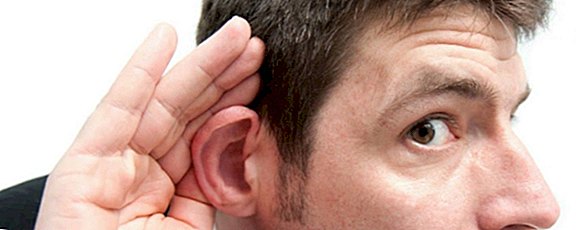Fears and Emotional Intelligence What are they and how to use them in our favor?
- 2019
This text that I bring to you today and here, is about fears and emotions, a topic addressed by the Argentine neuroscientist Facundo Manes, who teaches us about the neural bases of fear, and the emotional responses that accompany them.
It gives us tools so that we can make visible the concomitant fears and emotions more easily, and also warns us about the existence of social fear, which explains it in a simple, clear and detailed way.
In addition to this, it transmits the key to us so that we can fight it socially, since this fear implies us as members of the society that we are, as a community, as an environment.
If you like to know a little more about your health, your body and all the mechanisms that can cause fears in you, or even anxiety, I invite you to read this article and teach you in a very simple way to detect them in you or in those who surround you.
Conference on the Fears of Facundo Manes, comments by Gisela Soledad

Emotions are processes influenced by our evolutionary past and by our personal history that produce physiological and behavioral changes, which are very necessary to survive.
We live in an emotional state, it is impossible to imagine our life, without joys and sorrows, without love .
Emotions give color to mental states, emotions bind us to our evolutionary past, we share emotions with other species and also differentiate us from other species.
Emotions such as guilt, moral emotions, shame differentiate us from the evolutionary past.
But there are other basic emotions that bind us to our evolutionary past .
Darwin in a book called the expression of emotions in humans and animals described that certain emotions, fears, joy, sadness and surprise are in different species.
Darwin showed drawings and photos of different species with facial expressions of anger, disgust, fear.
Paul Ekman an American psychologist studied Tribes of individuals who had never been in contact with the West and asked them to represent emotions on their faces, for example if a boy was born or if a boy died, and these Tribus members who had neither had nor had contact with the west, they had the expression of happiness or sadness according to what they asked to represent.
Paul Ekman said following Darwin " if these basic emotions are in different species and in different cultures and have a characteristic facial feature they must have a biological seal ."
Today neuroscience is investigating the neural bases of emotion, today science can investigate emotion.
Emotions guide our de facto behavior most of the time we make decisions automatically that do not reach consciousness, which are based on our experiences and previous emotions that change according to the context.
Of course we sometimes make rational decisions, but we have limited cognitive resources, our brain has limited cognitive resources and we could not make decisions, because life is making decisions, I am now making decisions, you are now making decisions, we have no cognitive resources We neither have nor would it be effective to make every decision we make analyzing the pros and cons.
In millions of years the nervous system developed a decision system in humans, which most of the time, is not logical or computational, is facilitated by emotions and it is not by chance that in evolution, the nervous system developed this system, is the system that allows us to survive.
Sometimes we have time, as I said before, to make conscious, rational, deliberative decisions but we could not live like this, so emotions are adaptive instruments that allow us to survive situations or decide situations in which logical analysis is not enough, because no We have the information because the speed of vision we have to take urges us to make a decision.
I want you to see then that science today puts emotion at the same level of rational cognitive abilities.
Emotions are not seen in scientific research as pariahs of rational thinking, you have to clarify the mind of emotions to decide, no !, the emotional brain and the rational brain work by interacting permanently.
Emotions also modulate or influence what we remember, emotional memories are more remembered or remembered in greater detail which does not mean that the details of how we live the fact are true, but emotional memories are remembered more than in memories that They have no emotional content.
The emotion also facilitates the memory

If one is walking through Palermo, now, through the forests of Palermo (Buenos Aires), the night is very pleasant, the streets are illuminated, one goes along the sidewalk and feels a honk, feels a honk.
When he honks, they put a revolver on his head. We will have body changes, tachycardia, increased blood pressure, sweating, those are fears, that is fear, then we will feel fear .
The feeling of fear is after the endocrine hormonal changes that we have instantly. It is like when one goes sometimes on the sidewalk imagine on the sidewalk they put a leg on the cord of the sidewalk of a street in Buenos Aires and a bus comes and one goes back automatically.
That is a process that is not conscious, then we have the conscience and feel the fears for what could have happened.
If a week we are walking through the same place in Palermo, the same characteristics, we feel the same sound we felt before but there is no bark, we will have the same body changes, we will have tachycardia, sweating, increased blood pressure, pupil dilation that is anxiety.
Today science can differentiate fears, which are bodily changes occur automatically not consciously when there is a threat or danger stimulus, and subsequent feeling, or we can even differentiate when the stimulus is not Present but imagined by the brain .
You have to understand, as I said before, that the brain, which we all enjoy today, has millions of years of evolution .
There were evolutionary leaps to have the brain we have today. For example, being bipedic, we were not always bipedic, for example, having memory, or the memory systems we have today, the appearance of language, I don't always speak the human species, the interaction n social.
Part of the scientific community thinks that we differentiate ourselves as a species by the social complexity that we acquire as a species, no other species attends a Ted event.
Also because of the ability to deceive, whether we like it or not, many think that the ability to deceive has been key to the evolution of our brain .
So I want to tell you that all these mechanisms that we are explaining have many years, thousands of years .
Fears exist in many species, fear exists in many species, anxiety is different, human beings have a special ability to review the past, to create imaginary scenarios in the future.
Many times we ruminate or think things that could have happened and we care. And we have an anxious response or we imagine the future and we have anxious answers.
If someone of us is worried about an exam or is worried about a task he has to do, that is not fear, it is anxiety.
Neuronal Bases of Fears

Today we know that the neural bases of certain fear responses, there is a key area in both hemispheres, at the base of the temporal lobes, they are nuclei, one in each hemisphere, called the amygdala, which are key to the detection of fear .
Actually, tonsils are key, brain tonsils that are in the temporal lobe are key, they are key to detecting emotions, but particularly fears .
When we have the revolver in our head, or when we have another threat, any threat, which means danger, the amygdala, which is at the base of the temporal lobe in each hemisphere, triggers certain connections to an area of the brain, which is called hypothalamus and another area called brainstem, which are responsible for changes in fear called tachycardia, sweating, that is automatic, that process is not conscious .
We may at some point be aware that something is happening but also send information to the cerebral cortex to analyze what is happening, to feel what is happening.
If there is an explosion here, the amygdala will be activated via the hypothalamus and brainstem, for the body changes that I mentioned and then we will think or analyze if it is a bomb or a refrigerator fell out whatever.
The first thing we have to do is a body reaction that is automatic, that happens automatically, the product of evolution and then we feel or analyze the feeling of fear .
Many of these experiments are done in animals and much of what is known about fear and fear memories of someone, for example, Americans, New Yorkers, after September 11, 2001, any plane flying low was a stimulus for New Yorkers that caused a fear reaction.
Today we know some phases of the biology of this (fear), and much was based on research by the famous Russian physiologist and neuroscientist Pavlov.
You know that Pavlov conducted an experiment with a dog. This dog when he entered the caregiver salivated because he thought he was going to feed him, so Pavlov said we will do an experiment.
We are going to give it a sound and then we feed it, and the dog made a conditioned learning, which was the sound and the food. But when there was many times the dog salivated even if there was no food.
In rats today you can give a tone and the rat, nothing happens, does nothing, but if the tone is combined with an electric shock, a slight electric shock, the rat learns to associate the sound with the electrical stimulus. A week or days the rat hears the sound and is paralyzed, because fear produces a reaction of paralysis or flight.
Today these investigations are key because anxiety, the ability we have to ruminate the past and imagine the future, which is often evolutionarily advantageous because we can imagine future scenarios, but often this system works badly and detects danger where there is none.
And that is the pathological anxiety, we all have fears, we all have normal anxieties, because it is something evolutionary to imagine future scenarios or review past scenarios. But there is pathological anxiety or pathological fears when these phenomena affect our lives .
When it affects our work, social, family life and these are the most frequent psychopathological disorders today.
Brain diseases are the main causes of disability in the world more than cancer and cardiovascular disease and within brain diseases, especially mental illnesses, anxiety and fear and anxiety disorders is one of the most pathologies frequent.
All these investigations have the objective of improving the quality of life of many people around the world but there is also social fear .
What is social fear?

Fear is a phenomenon that also produces an effect in society, it is a mechanism of social control used by fathers, mothers, husbands, women, governments, teachers, bosses.
We could use, it would be better that we use, that another social control mechanism be used, but fear is used because, unfortunately, it is an effective mechanism.
Authoritarian governments install fear, we feel fear and fear as we are social beings, can be interpreted by the neighbor, the partner, the friend.
When someone feels fear, the environment feels fear .
How can we combat social fear?
Because we are social beings, we think automatically, sometimes rationally, but we also think, we also think socially, and we think based on our culture, culture, our friends, our family affects our thoughts and the best antidote for social fear is cooperation.
Cooperation, being together, being supportive is a good mechanism to combat fear, combat all fears but that only one is preserved, the fear that García Lorca sang to him "that the fear of losing the wonder be preserved".
Source
Fears, Facundo Manes, TEDxBuenosAires
Author : Gisela S., Editor in the Great Family of hermandadblanca.org.






